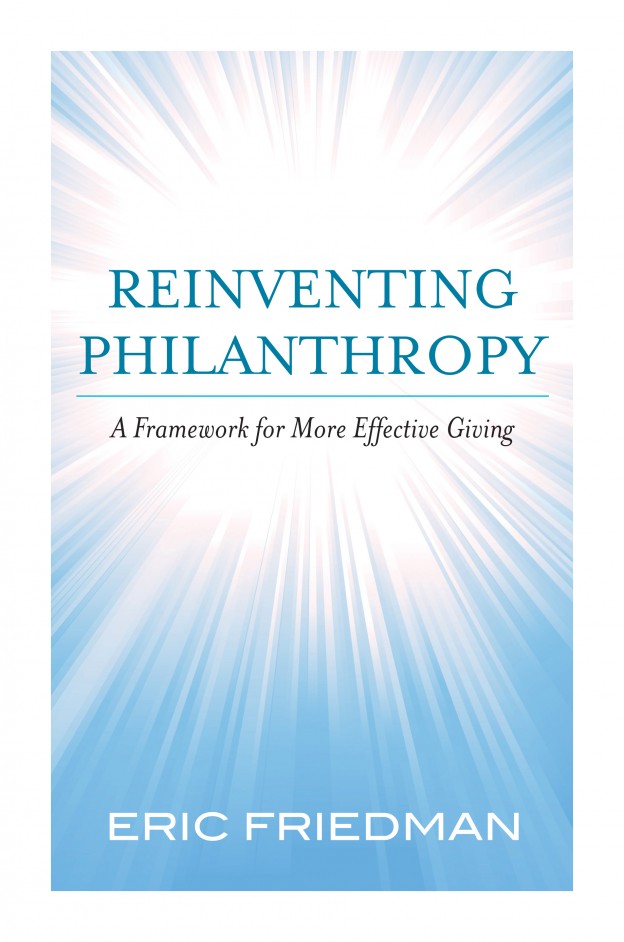Reinventing Philanthropy by Eric Friedman
 Imagine you want to help people who suffer in this world. You aren’t sure where to donate but you are sure you want to make the biggest impact with your donation. Eric Friedman asked himself this question and after doing research and talking to charities, he was surprised to find there was not an answer available. Instead of giving up or donating arbitrarily, he spent years looking into the issue and trying to understand how to maximize the impact of his giving.
Imagine you want to help people who suffer in this world. You aren’t sure where to donate but you are sure you want to make the biggest impact with your donation. Eric Friedman asked himself this question and after doing research and talking to charities, he was surprised to find there was not an answer available. Instead of giving up or donating arbitrarily, he spent years looking into the issue and trying to understand how to maximize the impact of his giving. The result is his excellent book, Reinventing Philanthropy.
Why does philanthropy need reinvention? People tend to think that if they support any cause or any charity then that is sufficient. Is it though? What if some of the 80,000 charities in Canada (or about 1 million in the US) are better than others? What if some causes are more important than others? What if your money could do a lot more good in the world depending on where you sent it? Wouldn’t this be important to know?
Thorough yet accessible, Reinventing Philanthropy provides a much needed exploration of numerous issues (such as those above) that have not received sufficient attention. For example, Friedman does a great job raising difficult questions about donor responsibility and accountability. It is really the case that your alma matter needs the donation more than children dying from easily preventable diseases? Should the main reason why you donate to fight an illness be that you just happen to know someone with it? Can you honestly support the notion that the lives of people who live near you have more worth than those who live further away from you? Don’t worry, fundamentally, he agrees it is your money and you can do whatever you want with it… but why wouldn’t you want to reduce the most amount of suffering?
We must acknowledge that we do not have infinite resources and people are suffering terribly; consequently, these are important questions to ask.
Reinventing Philanthropy also highlights the important distinction between outputs, outcomes, and impacts. For example, in the realm of education, perhaps an organization constructed 50 classrooms and provided desks for pupils. That may sound like a good output but does not necessarily mean anyone was helped. “To report outcomes, they should measure how much their program improves educational outcomes. This would address questions like how much does their support increase attendance, graduation rates, literacy, and test scores.” (p.84) Yet, Friedman tell us that even this is insufficient: we have to understand how these outcomes actually positively impact someone’s life, making it better. There is a large literature on how education does improve one’s life but there is always nuance and complexity. Furthermore, many outcomes in the charitable sector aren’t as clearly useful as education, and should be able to demonstrate their effectiveness and impact.
This book is so important because there really isn’t much information available to a donor that wants to make the biggest impact with their donation. While other books I’ve highly recommended have explore the case for giving at all (i.e., The Life You Can Save) and the effectiveness of specific interventions (i.e., More Than Good Intentions), this work places a greater emphasis on the donor, their opportunities and their responsibilities. Know that this is not a book that congratulates donors for their good deeds but instead challenges them to make their good deeds even more effective. Friedman provides a compelling case for his belief that donors “are likely to get deeper emotional fulfillment from their giving when they have more conviction about its impact.”
I highly recommend you read this book.
(ps: If you’re interested in exploring such issues right this moment, click here for a presentation I recently gave on being an effective altruist.)



0 Comments:
Post a Comment
<< Home